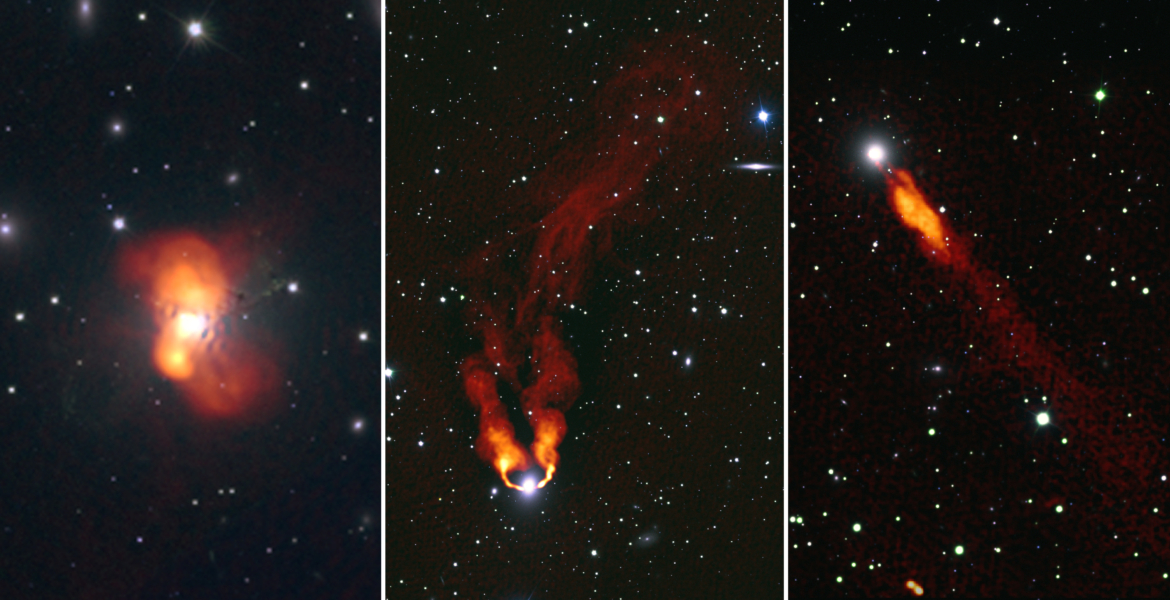The U.S. National Science Foundation National Radio Astronomy Observatory (NSF NRAO), in partnership with several leading Mexican universities and research institutes, has announced a series of landmark agreements and meetings aimed at advancing Mexico’s role in the Next Generation Very Large Array (ngVLA) project.
Recent News
Astronomers Discover a Superheated Star Factory in the Early Universe
Astronomers have uncovered a previously unknown, extreme kind of star factory by taking the temperature of a distant galaxy using the ALMA telescope. The galaxy is glowing intensely in superheated cosmic dust while forming stars 180 times faster than our own Milky Way.
Astronomers Share Largest Molecular Survey To-date: GOTHAM Legacy Data Goes Public
Astronomers in the “GBT Observations of TMC-1: Hunting Aromatic Molecules” research survey, known as GOTHAM, have released a spectral line survey with largest amount of telescope time ever conducted, charting more than 100 molecular species only found in deep space.
IMAGE RELEASE: Galaxies in the Perseus Cluster

For galaxies, as for people, living in a crowd is different from living alone. Recently, astronomers used the National Science Foundation’s Karl G. Jansky Very Large Array (VLA) to learn how a crowded environment affects galaxies in the Perseus Cluster, a collection of thousands of galaxies some 240 million light-years from Earth.
Left: The giant galaxy NGC 1275, at the core of the cluster, is seen in new detail, including a newly-revealed wealth of complex, filamentary structure in its radio lobes.
Center: The galaxy NGC 1265 shows the effects of its motion through the tenuous material between the galaxies. Its radio jets are bent backward by that interaction, then merge into a single, broad “tail.” The tail then is further bent, possibly by motions within the intergalactic material.
Right: The jets of the galaxy IC 310 are bent backward, similarly to NGC 1265, but appear closer because of the viewing angle from Earth. That angle also allows astronomers to directly observe energetic gamma rays generated near the supermassive black hole at the galaxy’s core.
Such images can help astronomers better understand the complex environment of galaxy clusters, which are the largest gravitationally-bound structures in the universe, and which harbor a variety of still poorly-understood phenomena.
“These images show us previously-unseen structures and details and that helps our effort to determine the nature of these objects,” said Marie-Lou Gendron-Marsolais, an ESO/ALMA Fellow in Santiago, Chile. She and a number of international collaborators are announcing their results in the Monthly Notices of the Royal Astronomical Society.
The National Radio Astronomy Observatory is a facility of the National Science Foundation, operated under cooperative agreement by Associated Universities, Inc.
CREDIT: M. Gendron-Marsolais et al.; S. Dagnello, NRAO/AUI/NSF; SDSS.
###
Media Contact:
Dave Finley, Public Information Officer
(575) 835-7302
[email protected]
###
This news article was originally published on the NRAO website on November 12, 2020.
Recent News
NSF National Radio Astronomy Observatory and Mexican Institutions Sign Historic Agreements to Advance ngVLA Collaboration
The U.S. National Science Foundation National Radio Astronomy Observatory (NSF NRAO), in partnership with several leading Mexican universities and research institutes, has announced a series of landmark agreements and meetings aimed at advancing Mexico’s role in the Next Generation Very Large Array (ngVLA) project.
Astronomers Discover a Superheated Star Factory in the Early Universe
Astronomers have uncovered a previously unknown, extreme kind of star factory by taking the temperature of a distant galaxy using the ALMA telescope. The galaxy is glowing intensely in superheated cosmic dust while forming stars 180 times faster than our own Milky Way.
Astronomers Share Largest Molecular Survey To-date: GOTHAM Legacy Data Goes Public
Astronomers in the “GBT Observations of TMC-1: Hunting Aromatic Molecules” research survey, known as GOTHAM, have released a spectral line survey with largest amount of telescope time ever conducted, charting more than 100 molecular species only found in deep space.
